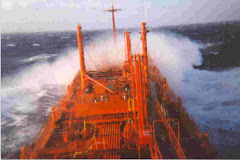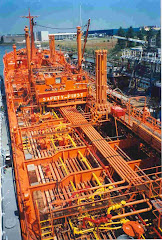A great debate rages over whether China's economic model is sustainable. Western economists often express fawning admiration of the success of this state capitalist model, some of the most virulent critics are Chinese. There are issues of asset bubbles in real estate, massive export production overcapacity, missallocation of resources and a banking system riddled with non-performing loans.
The Western conventional wisdom is that Chinese stimulus has been more effective because it is state-directed and financed by trade surpluses rather than debt. There is a general confidence that rising domestic consumer demand will save the day in the end.
Back in 1994, Paul Krugman wrote an article: "The Myth of Asia's Miracle", where he compared rosy Western projections of Asian growth with cold war projections of Soviet growth rates. Krugman maintained that the rapid growth in output could be fully explained by rapid growth in inputs: expansion of employment, increases in education levels, and, above all, massive investment in physical capital. He pointed to two basic implications:
The willingness to save, to sacrifice current consumption for the sake of future production.
Future limits to their industrial expansion - in other words, economic growth based on expansion of inputs, rather than on growth in output per unit of input, is inevitably subject to diminishing returns.
We know that the Soviet system fooled most Western intellectuals and eventually imploded. Are today's China watchers any smarter?
Sceptics like Andy Xie and Martin Hutchinson argue that most statistics out of China are misleading and false. China remains a repressive, closed society with little transparency and lots of corruption. The state corporate sector is still gigantic and supported by state-owned banks. Savers are not permitted to take money out of China, and their huge savings prop up an overvalued stock market and a bond market that is comparable in size to the freely flowing international bond market. Private sector companies are either youthful fly-by-night operations or dubiously privatized state behemoths. Prices are still largely administered, and investment flows mostly to the politically connected rather than the economically attractive. Education is relatively poor outside the main population centers, and land ownership is still restricted.
Even though China has had three decades of high growth, few companies are globally competitive. While China is experiencing weak exports now, the weak dollar allows China to release the liquidity saved up during the boom worrying about currency depreciation.
Xie stresses that there is tremendous over capacity in the construction industry. The pricing structure is highly distorted. State-owned enterprises borrow from state owned banks and give the money to local governments at land auctions, so everything turns around the big Government pocket. Further the rapid urbanization and one-child birth policy will have a very adverse effect on demographics that will create a train-wreck situation. "China’s wealth inequality is already very high. A sizable or even the majority of China’s population may not have meaningful wealth even after China’s urbanization is complete."
Xie argues that the party in China will be over when the US dollar starts to appreciate again. The risks are that prevailing FED easy money and massive increase in US sovereign debt will lead to higher inflation, obliging the FED to raise interests rates as they did in the 1970's.
Of course, there are two divergent aspects in this argument. Easy money and massive FED liquidity are already putting some renewed pressure on the US dollar. Higher interest rates, however, are only foreseeable when and if inflation rises in the US. Right now that is unlikely with only the slope of GDP decline improving, but the massive overleveraging and debt overhang in the US opens the temptations to debt monetization down the line. Already treasury yields are starting to harden. Should the FED be obliged to raise interest rates as they did under Paul Volcker, then Asia could be in deep trouble.
In any case, with the US consumer shopped out, overleveraged and coming prospects of higher tax load, it is certainly not evident that there will be a quick revival of consumer export markets. The EU is also likely to recover slowly. This is likely to lead to a permanent structural rebalancing of Chinese export surpluses. It is not obvious that Chinese domestic demand could absorb the production overcapacity, especially considering what was said above. The stimulus is not workable for an indefinite time period.
Shipping markets are highly dependent on China as the main demand driver against a massive order book built up in recent boom times. The construction industry accounts for approximately 50% of Chinese steel demand so it is closely related to coal and iron ore imports in the dry bulk sector. Massive container ordering was predicated on unlimited export market potential to the West. There have been substantial refinery projects in the ME for export to the Far East as well as huge refineries built in China for the tanker business.
The China story still excites Wall Street investors and already this year, China has again brought a revival in the dry cargo market. Should reality further down the line not meet these expectations, then truly hard times could fall on this industry.








